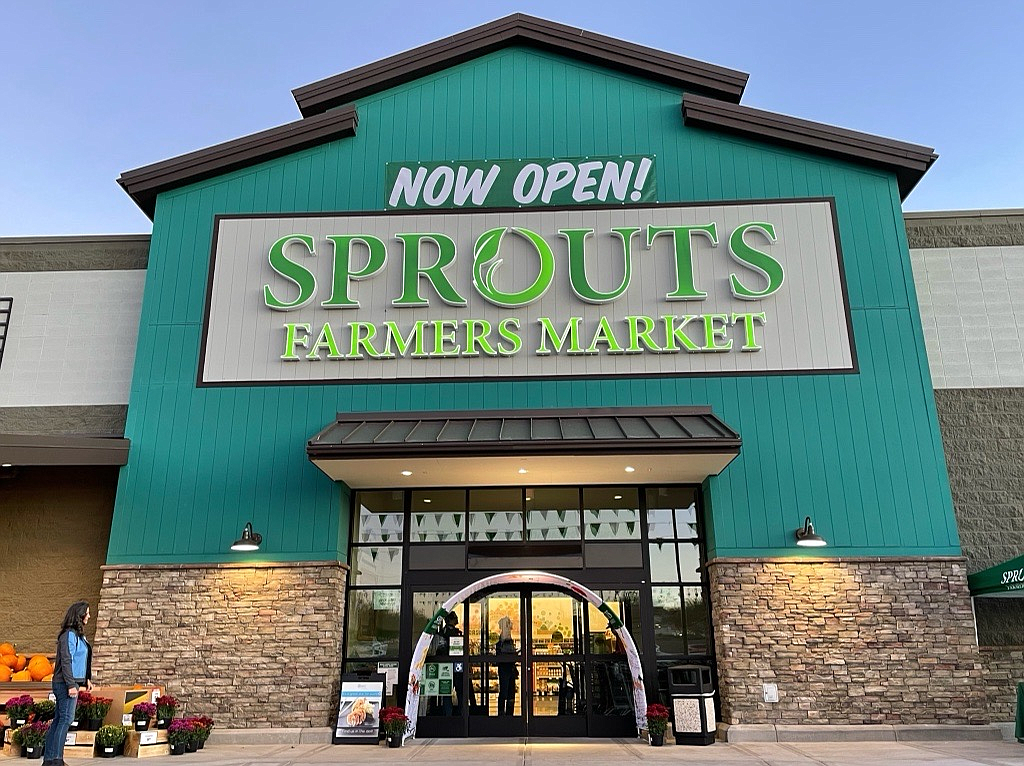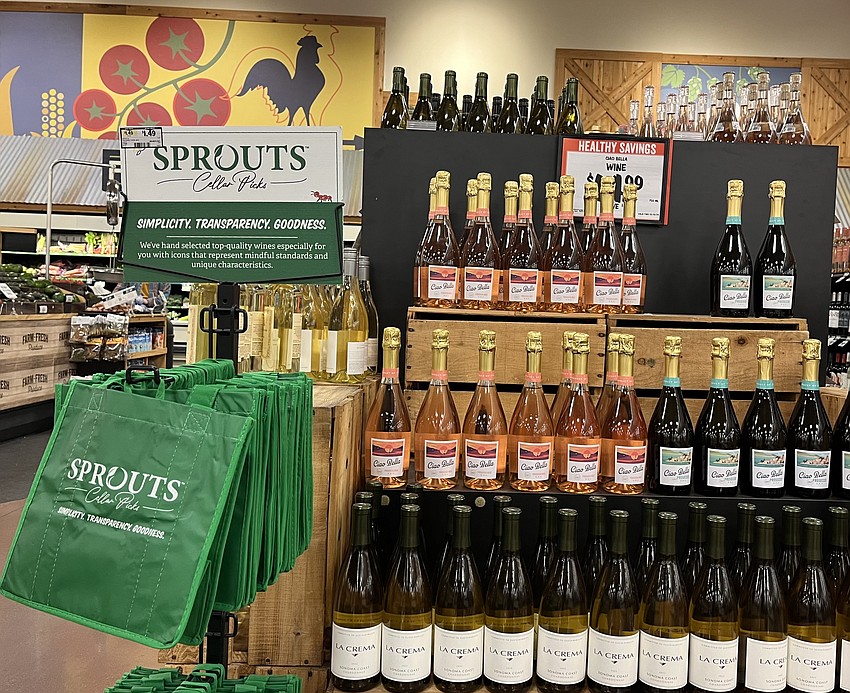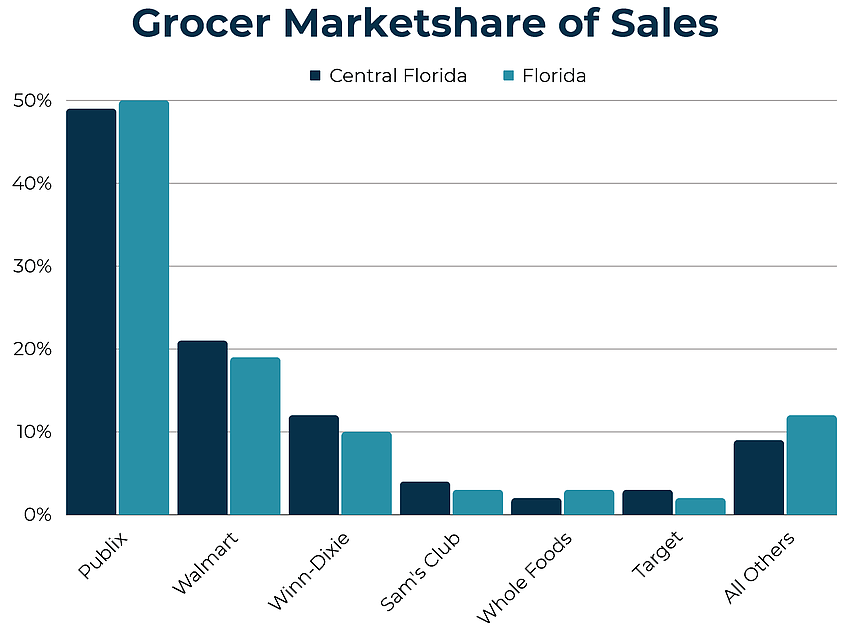- July 26, 2024
-
-
Loading

Loading

Around 6:45 a.m. Jan. 12, about 25 employees and 445 customers stood outside the new Sprouts Farmers Market in Port Charlotte, preparing to cut the ribbon to commemorate the store’s opening.
It was what is quickly becoming a familiar scene, a reflection of how the Phoenix, Arizona, grocery store chain is getting good at store openings thanks to so much practice. Just one week later, on Jan. 19, the process would be repeated. This time in Miami.
In a state where grocery stores seem to be popping up like weeds, Sprouts has been particularly aggressive. While the natural food chain does not have the enormous footprint a Publix, Aldi or Walmart have, it is making big inroads. In fact, the Miami location, Florida store No. 45, gives it the same number of stores as it has in its home state of Arizona.
“Florida has gotten significant growth all over. A lot of younger folks are coming down, a lot of families,” says Sprouts Chief Strategy Officer Dave McGlinchey,
“And it's definitely a more healthy lifestyle that people are living there. So, we've just gone where the customers who, we think, will appreciate our brands are. Where there are a lot of them. And we build stores around there.”
Sprouts opened its first store in Florida in 2017 in the Carrollwood neighborhood of Tampa. Of the 45 in Florida, 20 are along the Gulf Coast — 13 in the Tampa area and one each in Estero, Sarasota, Naples, Bradenton, Cape Coral, Port Charlotte and Fort Myers.

The plan is to open five additional stores this year, bringing the total of new Florida Sprouts locations in 2024 to seven. One of those is its first ever downtown Sarasota location, a 10-year lease it signed with Belpointe REIT Inc. of Greenwich, Connecticut, to open in One Main Plaza.
Its fast growth isn’t limited to Florida, either. On Jan. 19, as the store in Miami opened, another, in the Washington, D.C. suburbs, was opening. Six more stores are expected to open by the end of March.
In all, the chain, whose average store is 24,000 square feet, has about 400 stores in 23 states and employs 31,000.
McGlinchey says one reason for the chain’s growth, particularly on the east coast of the U.S., is that “there’s nothing like what we do.”
But the art of expansion is knowing where to go and finding areas where people eat healthy and are excited about a different lifestyle. That’s “why the growth in Florida is kind of a centerpiece.”
With its well-documented population growth since the pandemic, Florida has become a destination point for retailers of all sorts.
But grocery stores provide a different type of service and dynamic than say a restaurant or sporting goods chain does. Grocery stores create a deeper bond and continue to lure shoppers in despite online options, making them immune, in a way, to some existential threats other mass market retailers face.
That’s because when it comes to foodstuff, consumers prefer familiarity, they like to feel, smell and see what they are buying, says R. Christopher Jones, a professor of economics at the University of South Florida and president and chief economist of Florida Economic Advisors in Tampa.
“If you go in to buy produce, you typically like squeezing the cantaloupe, you know. You like being able to physically see the cuts of meat you're about to purchase,” he says. “I mean, seeing a picture of them on the internet doesn't really do it for you at the end of the day.”
Sprouts is by no means alone when it comes to growth in Florida.
Aldi has been active, opening 13 Florida stores in 2022 and with plans to open as many as 150 over the next several years. (A spokesperson did not respond to a request for comment.) Trader Joe’s, The Fresh Market and others, have also opened new locations in the state.
But the undisputed king of Florida’s grocery store industry, of course, remains Publix Super Markets and any attempt to make competitive inroads is really a race for second place. Lakeland-based Publix, with $54.5 billion in revenue in 2023, currently has 860 stores in Florida and 1,362 nationwide. That’s along with seven distribution centers and three manufacturing plants here.
Publix officials declined to disclose growth plans for Florida for this story.
“We are always evaluating our locations to provide our customers a pleasurable experience by having a store that meets their shopping needs for today and into the future,” a Publix spokesperson says in an email.
“As you can imagine, there are a number of variables and evaluations utilized in making a decision on investing in real estate and building a facility. These evaluations are complex and proprietary in nature.”
Publix actually has a real estate location portal on its website, where a developer can reach out to one of at least 10 real estate specialists the company employs. The grocer says the following information is required to consider a developer-proposed site:
"One of our competitive advantages is our ability to fit into the community in which we locate with the proper scale, prototype and development type to meet our customers' needs," the website says.
In its Florida Grocery Report 2023, commercial real estate firm JLL found that Publix controlled half the market share in Central and South Florida. In Central Florida — which includes the Orlando, Tampa and Fort Myers markets — Publix stores brought in about $12.9 billion in sales, more than twice Walmart’s sales of $5.8 billion. The numbers are similar in South Florida, where Publix stores brought in $9.4 billion in sales and where it has a nearly 60% market share.

Bucking the trend is North Florida, where Walmart has a 35% market share followed by Publix with 27% and Winn-Dixie with 13% according to the report. (JLL is scheduled to issue its latest grocery store market report in mid-February.)
Publix is such a major player that it not only drives the grocery industry, but it also takes huge chunks of space in shopping centers across the state, making it one of the biggest, and most powerful, anchor tenants in the state.
Given its sheer size, reputation and economic power, it is a formidable foe for anyone looking to get a slice of Florida’s grocery market.
“It's really difficult to go against Publix. I mean, there's a big demand that's here,” says Jeffrey Dervech, president of Tampa commercial real estate firm Dervech Real Estate, which specializes in shopping centers. “They do a great job. I think they're very consistent and other grocers in the state, in my opinion, really can’t compete on the scale that they have.”
But Publix President and CEO Kevin Murphy says size and reputation isn’t enough. It is a crucial Publix maintain the focus that got it to this point.
While every company in the grocery industry is faced with the same challenges, chief among them ultra-slim profit margins, Publix’s goal is to maintain the shopping experience customers expect, he says. That means clean stores, wide aisles, strong customer service and quality products. These may seem like little things but are major differentiators and keep the brand consistent in customers eyes.
“I just believe we're really good at what we do,” Murphy told the Business Observer in an interview during what Publix dubbed the inaugural Feeding America food bank hunger summit, held in Lakeland last March.
A moment later he added: “We're not willing to dip down in the quality products that we offer in order to offer a lower price or to make a larger profit. We stay very dedicated to that. And we believe in the long run — we're fortunate to have been around 92 years now and we expect to be around another 92 years — there's going to be ups and there's going to be downs. But we believe that we're doing the right thing for the right reasons. And if we continue to be fair, then Publix will continue to be here and continue to be a strong company.”
As far as McGlinchey is concerned, Sprouts isn’t really competing against Publix. Rather than attempting to tackle that Goliath, it is focused on creating its own footprint in the state.
That means building distribution centers that can service stores within a 250-mile radius of the market it wants to grow in or into. Given the size and shape of the state, this model will allow Sprouts to expand across most of Florida.
It currently has one such center, a 135,000 square-foot facility in Orlando. So for now, the focus has been mostly in markets south of Tampa and Orlando and along both coasts. It also has a store in The Villages and two stores in Jacksonville.
One key to its expansion plans is it is fairly open to where it looks for real estate, says McGlinchey.
The company’s market strategy, he says, is not to build stores one on top of another, but to build out slowly, raising Sprout’s brand awareness as it goes and creating a customer base in the process.

“Literally there's probably 100 different things that we look at” when choosing where to open.
Among those “100 different things” is finding cities and neighborhoods where customers like eating healthier, trying new things. In new markets, the company likes to be near big box retailers like Costco and Target, as well as gyms. Interestingly for a natural food chain, high income in an area isn’t that important. If the income is there, that’s good, but it doesn’t need to be high, the company says.
In the end, McGlinchey says, it’s not all about where a store is that will bring customers back again and again. It’s what they’ll find inside.
“We have a whole foraging team that goes out and tries to find these small, innovative new companies that do something that no one else does and put that on the shelf and see if we can get people to kind of figure it out,” McGlinchey says.
“No one wants to do that, right? There's no way Publix wants to do that. Walmart, Costco. That's not their thing. They need to sell a lot of fewer items. We just need to sell a little bit of a lot of different items rather than worry about, ‘Oh geez, how do we be really cheap on this or get Oreos or Bounty?’ Someone else can do that. We don't need to do that.”